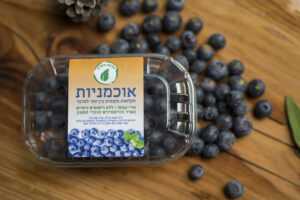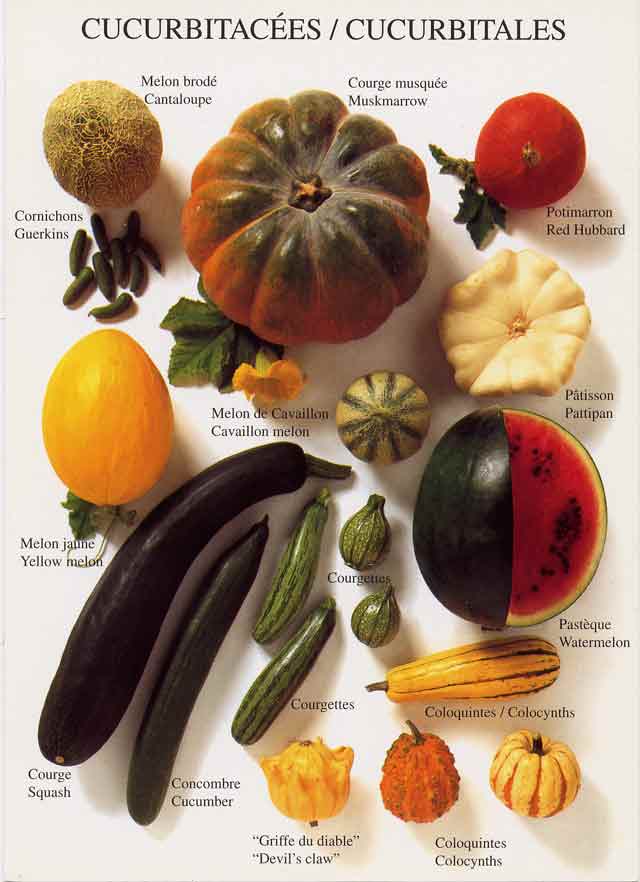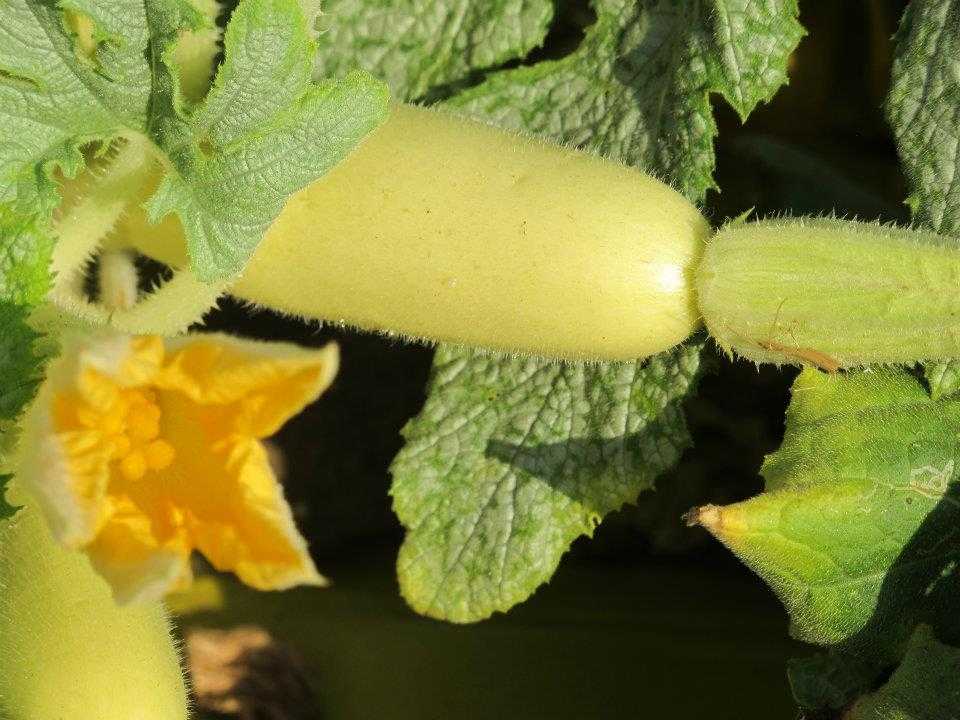DON’T MISS TAMIR’S EXTRAORDINARY BLUEBERRIES!

Blueberries need special conditions to best grow, including acidic soil and especially beneficial cold spells. To maintain an ideal level of acidity in the soil, Tamir’s blueberries are grown on detached beds inside large containers, receiving (non-organic) fertilization, but are never sprayed.
Price: 16 NIS per 125-gram package; 60 NIS per half-kilo package
The blueberry season is short! (Only two months, and then followed by the raspberry season, inshallah). So, hurry and add blueberries to your boxes now via our order system.
______________________________________________________________
DELIVERY CHANGES NEXT WEEK FOR YOM HA’ATZMAUT:
Monday deliveries will be advanced to arrive on SUNDAY, MAY 12.
The Chubeza Order System will close for any changes in your order this coming FRIDAY, MAY 10 at 8:00 to enable us to prepare.
Orders for sprouts and mushrooms will close early this coming Thursday MAY 9 at 12:00.
Wednesday deliveries will arrive as usual on WEDNESDAY, MAY 15.
The Chubeza Order System will close for any changes on MONDAY, MAY 13 at 9:00 to enable us to prepare.
__________________________________
Over the past few weeks, you’ve been receiving one of the first vegetables of spring – squash! The good news is that this is just the beginning – there are more varieties on the way! As the pioneer of its family, we happily dedicate this rainy spring Newsletter to this remarkable vegetable.
Squash (zucchini) belongs to the prominent Cucurbitaceae family, a very diverse, widespread clan whose members are grown primarily for food, but also for other interesting uses. The Cucurbitaceae family tree splits into five main branches: 1. cucumber, fakus and melon; 2. watermelon; 3. various types of pumpkins and squashes; 4. the ornamental, inedible pumpkin used for decorative purposes and to make serving utensils and musical instruments; and 5. Lupa pumpkins, whose flesh is used to create natural sponges.
Pumpkins and squash are close cousins with a range of different characteristics. Pumpkins are harvested at maturity after a long growth period of 3-5 months, when their shell is hard and the seeds inside are hard and plump. (Usually, we remove them before cooking.) Conversely, squash is harvested young, after only one or two months of growth. Its peel is still soft, and chafes easily. The seeds are thin and imperceptible, and consumed along with the vegetable.
Squash and pumpkins are natives of Central America. Columbus introduced them to the Europeans, who first grew them only in botanical gardens, enjoying their beautiful blossoms. The Israelites, pleading “We remember the fish we ate in Egypt at no cost–also the squash, melons, leeks, onions and garlic…” apparently were not craving what we call squash, but probably the fakus, its cousin that grew at the time in Africa and the Middle East. He received his Hebrew name Kishu from the Arabic, Kusa (from Acadian), with its formal name being Kishu Pumpkin.
Even within its very own family, squash varieties vary from one sibling to another. The Mid-Eastern squash is plump and light green. His longer and thinner brothers, the zucchinis, received their name from the Italian zucca for pumpkin, thus “a small pumpkin.” Chubeza grows both light and dark green zucchini.
Preparation for squash season starts here at the end of winter. We sow and plant our squash seeds at the end of January-beginning of February, when it’s still mighty cold. To protect them, we spread a plastic cover over the ground, and cover the seeds/seedlings with another plastic sheet to insulate them from the cold. The result is a kind of tunnel warmed by the sun’s rays which shields from the biting frost and end-of-winter storms.
When wintertime makes way for spring and it gets too hot under the plastic, we cover the squash plants in Agril – a cloth made of non-woven material. These sheets are very thin but insulated. They are not sealed, thus allowing the sunrays to penetrate, but are relatively strong. In winter we use Agril to protect the delicate greens from possible hail damage, and in springtime we spread it over the Cucurbitaceae family members in the first stages of their growth to protect them from insects.
These aren’t your average vegetarian insects who just want to nibble on some squash greens, but rather flies, mosquitos and other fly-by insects who merely wish to land a hand or leg on the squash. The problem is that they aren’t great about hygiene, and thus transmit viruses and diseases that damage the young squash plants. The viruses and leaf diseases are the worse threats to the wellbeing of this gourd family, with the squash, fakus, melons and various small pumpkins being the most sensitive of all. Which is why we cover them with cloth as they start out in the world, just like we would put up a screen at home to prevent flying insects from entering the living room. Once the squash begins to bloom, we remove the cover, because it’s a whole new concert now, and for this segment we do need the humming of flying insects…
So how does squash move from being a green, impressive plant to ripening and bearing fruit? Along the way, there are the big, beautiful yellow flowers, lovely to look at and particularly attractive to yellow-loving pests. The squash plant bears two types of flowers: male and female (everything written about squash holds true for pumpkins, cucumbers, melons, watermelons, fakus and the rest of the Cucurbita or gourd family). Both types of flowers resemble each other from afar, but when you look closely, the differences are evident.
The insects, thrilled by the bright yellow hue, enter the male flower, have their fun, and gather some nectar and some pollen that looks like this:

Then they move on to frolic in the next nearby playground, the female flower, spreading the male pollen all over. The now-fertilized female flower closes and shrinks, and at the end of the process looks like this:

If you look closely, you will see that at the edge of this flower, a fresh, new little squash is growing. It’ll only take him a few days before he is ready for careful and delicate picking, so as not to scratch or damage the shiny, delicate peel. Squash grow so quickly that we harvest them daily. A squash forgotten on the bush will be discovered a few days later in monster-like dimensions…
Squash is very low in calories and high in dietary fiber. It contains magnesium, potassium and folic acid, Vitamins A and C and other antioxidants. Zucchini has a fresh, neutral flavor (some may call it bland), but no need for a PR campaign: its neutral taste is probably the ingredient that made zucchini a favorite child in almost every country’s cousine. In France they are used in ratatouille and quiches; in Italy they are prize components of caponata, frittata, antipasti and pasta primavera. The Italians also harbor a special fondness for sauteed zucchini flowers. Romanians and Bulgarians cook it in a givetch, in Turkey it stars in fritters, in the Middle East one can stuff it with rice and ground meat, and Iraqis give squash top billing in kubeh soup. In the Far East, zucchini and squash are stir-fried in a wok, while in the United States they make their way into yummy bread and zucchini jam……
But hey, zucchini can also be eaten without cooking, frying or baking at all. Just squeeze them to make juice, a great detox for the body, or enjoy them fresh in your salad, a la cucumbers. On days when cucumber shortages struck Chubeza, we cheerfully chopped zucchini to fill our vegetable salad lunch, which was polished off in seconds.
May we be blessed with good tidings this week!
Alon, Bat-Ami, Dror, Einat and the entire Chubeza team
___________________________________
WHAT’S IN THIS WEEK’S BOXES?
Monday: Onions, bag of carrots/bunch of mini-carrots, lettuce, red beets, New Zealand spinach, potatoes, zucchini/squash, parsley/ coriander/basil/nana, tomatoes, cucumbers, turnips/fennel/ cabbage/celery stalk.
Large box, in addition: Bell peppers/sweet potatoes/fakus, Swiss chard, acorn squash/slice of pumpkin.
FRUIT BOXES: Red/golden/green apples, loquats (shesek)/nectarines, avocados, bananas/pomelit/pink grapefruit.
Wednesday: Onions, bag of carrots/bunch of mini-carrots, lettuce, red beets, New Zealand spinach/kale, potatoes, zucchini/squash, parsley/basil/nana, tomatoes, cucumbers, Swiss chard/celery.
Large box, in addition: Bell peppers/fakus/slice of pumpkin, acorn squash/sweet potatoe, turnips/fennel/kohlrabi/cabbage
FRUIT BOXES: Red or golden apples/pears, loquats (shesek)/nectarines, avocados, bananas/pomelit/pink grapefruit.








